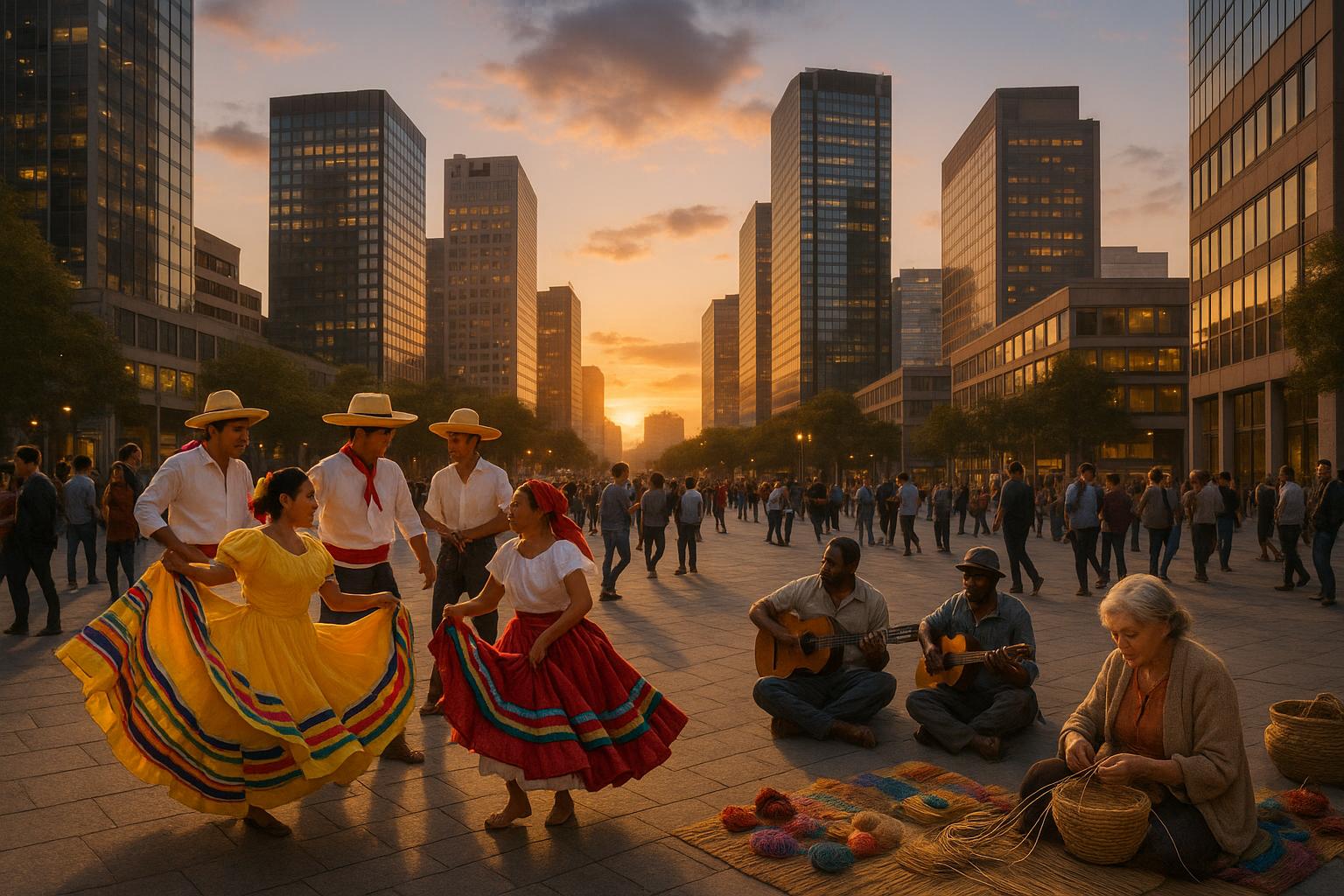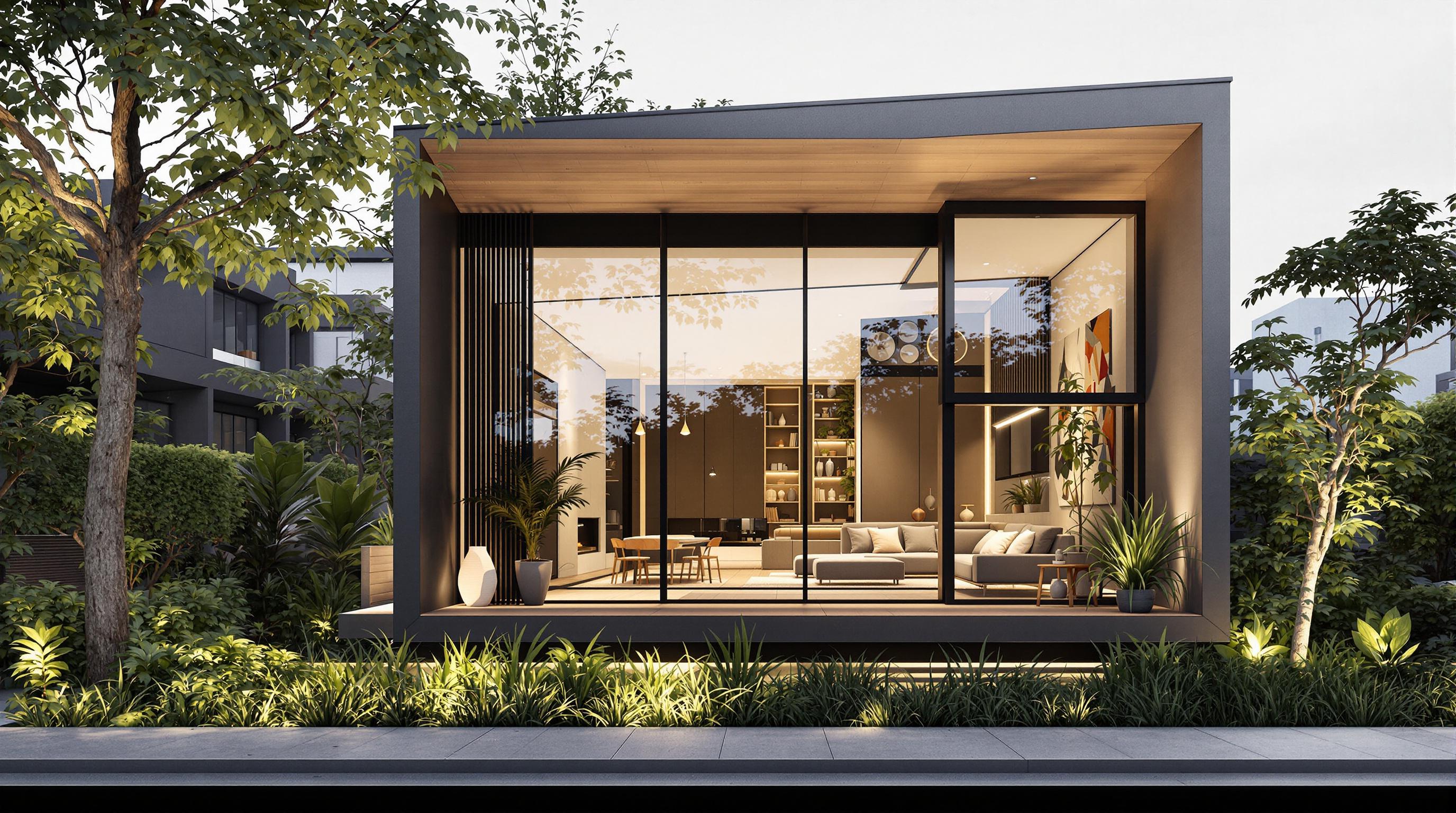Religion has deeply influenced architecture throughout history, shaping how buildings look, feel, and function. From ancient temples to modern worship spaces, religious beliefs are reflected in design elements like light, space, and materials. Key insights include:
- Symbolism: Religious buildings often use shapes (like domes or crosses) and patterns (like Islamic geometry) to represent spiritual ideas.
- Light and Space: Natural light and vertical spaces symbolize divine presence and connection to heaven.
- Materials: Choices like stone for permanence or gold for sacredness carry both practical and spiritual meaning.
- Historical Evolution: From Gothic cathedrals to modern eco-friendly temples, religious architecture blends tradition with contemporary needs.
Modern trends include sustainable designs, multifaith spaces, and the use of technology to enhance functionality while honoring spiritual values. Religious architecture continues to balance heritage with innovation, creating spaces that inspire and serve diverse communities.
How do you build a sacred space?
The Historical Role of Religion in Building Design
Religious architecture has transformed over time, showcasing shifts in beliefs and advancements in building techniques.
Religious Buildings in Ancient Times
Structures like Egypt's Karnak temples, Greece's Parthenon, and Rome's Pantheon highlight the grandeur of ancient religious architecture. These buildings featured monumental designs, intricate carvings, and creative use of materials such as stone and concrete [1][7].
Medieval and Gothic Religious Architecture
Gothic cathedrals pushed engineering boundaries to create soaring, light-filled spaces. Iconic examples like Notre Dame and Chartres Cathedral showcase hallmark features such as pointed arches, ribbed vaults, and stained glass windows. These elements not only told biblical stories but also emphasized spiritual themes, reflecting the medieval focus on divine transcendence and communal worship [1][7].
Renaissance and Baroque Religious Buildings
During the Renaissance and Baroque periods, church patronage drove architectural advancements. St. Peter's Basilica stands as a prime example [1]. The Renaissance focus on humanism and perspective influenced religious buildings, blending spiritual ideals with earthly beauty. This era also saw breakthroughs in dome construction, with St. Peter's Basilica being a standout example.
Religious structures from this time incorporated elaborate domes, dramatic lighting, and detailed artistic decoration, creating spaces designed to inspire awe and deepen spiritual connection. These innovations allowed architects to design increasingly complex and ambitious buildings [7].
These historical achievements continue to shape modern sacred architecture, balancing traditional influences with new ideas.
Key Features of Religious Architecture
Religious buildings are designed with distinct elements that express spiritual beliefs through carefully crafted architectural features.
Symbolism in Religious Architecture
Symbolism plays a central role in religious architecture, using design elements to convey spiritual ideas. For example, Christian churches often adopt a cruciform layout, symbolizing the cross, while Islamic mosques incorporate intricate geometric patterns to reflect divine unity [1][2]. These features go beyond aesthetics, visually expressing core principles of faith.
A striking example is the Great Mosque of Cordoba. Its horseshoe arches and geometric designs not only symbolize Islamic ideas of unity but also highlight a blend of Islamic, Christian, and Roman cultural influences [4]. Beyond shapes and patterns, religious architecture often integrates light, color, and space to create profound spiritual experiences.
The Use of Light, Color, and Space
Light is frequently used in religious architecture to symbolize the divine. Architectural historian Kaarwan explains:
"Byzantine architecture deeply embedded theological themes in its design, reflecting religious beliefs." [5]
The Hagia Sophia demonstrates this through its dome windows, which flood the interior with light, creating an ethereal effect that represents divine presence [4].
| Light Element | Spiritual Significance | Architectural Application |
|---|---|---|
| Natural Light | Represents divine presence | Domes, clerestory windows |
| Filtered and Directed Light | Suggests sacred transformation and focus | Stained glass, light shafts, screens |
Materials and Building Techniques
The choice of materials in religious architecture often carries both practical and symbolic meaning. Stone, for example, conveys permanence and strength, while gold is associated with sacredness and importance. The Pantheon’s concrete dome and its oculus illustrate how innovative construction methods can evoke a sense of connection to the divine [1][2][3].
While traditional materials and techniques remain influential, modern religious architecture adapts to contemporary spiritual practices while honoring enduring principles of sacred design.
sbb-itb-1be9014
Modern Trends in Religious Architecture
Religious architecture is shifting, influenced by societal changes and advancements in technology.
The Influence of Secularism on Religious Design
The rise of secularism has encouraged simpler, more streamlined designs. A prime example is the Cathedral of Brasília, which merges modernist style with spiritual meaning [1]. Today, many religious buildings are designed to serve more than one purpose:
| Function | Design Approach | Example Features |
|---|---|---|
| Multipurpose Use | Flexible layouts and modularity | Movable walls, AV tech |
Catering to Multifaith Communities
As societies become more diverse, religious architecture reflects this by creating spaces for multiple faiths. Facilities like the Interfaith Chapel at the University of Toronto and the University of Michigan's multifaith center prioritize inclusivity with neutral design elements and input from diverse communities.
The Role of Technology in Religious Spaces
Technology is reshaping how religious spaces are designed and used. Advanced materials, innovative lighting, and eco-friendly systems are now common. For instance, the Bahá'í Temple in Chile features smart lighting systems and sustainable design principles.
Digital tools like Architecture Helper aid architects in preserving historical design elements while applying them to modern projects.
Sustainability is also becoming a key focus. The Solar Ark in Japan, a Shinto shrine, incorporates solar panels and maximizes natural light, blending environmental responsibility with spiritual purpose.
These trends show how religious architecture balances tradition with modern needs, creating spaces that resonate with contemporary values.
Conclusion: Religion's Influence on Architecture Today and Beyond
How Religion Shapes Architecture
Religious architecture reflects spiritual beliefs and cultural values through its design, using elements like light, space, and materials. From medieval cathedrals like Chartres and Notre Dame to modern landmarks like the Cathedral of Brasília, these structures show how faith inspires architectural creativity [1]. By incorporating tangible features such as light and intricate materials, these buildings often symbolize deeper theological ideas.
Classic features like Islamic domes and Christian stained glass are being reimagined in contemporary designs, blending tradition with modern aesthetics [2]. The Mosque-Cathedral of Córdoba is a striking example, merging Islamic and Christian design principles to create a space that bridges faiths [1]. This interplay of historical and symbolic elements continues to guide architects in crafting spaces that honor both heritage and modernity.
As society evolves and technology advances, religious architecture adapts to meet new challenges while maintaining its spiritual core.
What Lies Ahead for Religious Architecture
The future of religious architecture is being shaped by factors like sustainability, technological advancements, and cultural inclusivity. Here's how these elements are influencing the field:
| Factor | Impact | Examples |
|---|---|---|
| Sustainability | Incorporating eco-friendly designs | Solar panels in the Solar Ark shrine |
| Technology | Expanding design possibilities | CAD tools for intricate geometric patterns |
| Cultural Inclusivity | Designing for diverse communities | University of Rochester's Interfaith Center |
"The importance of creating buildings that are inclusive and respectful of diverse religious communities is a key takeaway from both historical and contemporary religious architecture" [1][2]
Renovations of iconic structures, like the Hagia Sophia in Istanbul, highlight how architects are finding ways to preserve history while meeting modern needs [6]. This balance between honoring tradition and embracing innovation will continue to shape religious architecture, ensuring its relevance in a rapidly changing world.
FAQs
How does religion shape architecture?
Religion plays a key role in influencing architectural purpose and design. For example, Christian churches often use cruciform layouts to symbolize the cross, while mosques feature domes and minarets that represent unity and the call to prayer [1][2]. A striking example is the Hagia Sophia in Istanbul. Its massive dome and detailed mosaics reflect its unique history of serving both Christian and Islamic communities, illustrating how faith can directly impact design choices [5].
What are the features of religious architecture?
Religious architecture stands out through its use of symbolism, light, scale, and materials to convey spiritual meaning. For instance, Christian churches often feature cross-shaped layouts, stained glass windows, and towering spires. In contrast, Islamic mosques showcase geometric patterns, intricate latticework, and expansive domes [1][2].
These design elements aim to create spaces that inspire a sense of spirituality. A modern example is the Church of Light, which blends traditional principles with contemporary design to evoke deep spiritual connection [4].
If you're curious about analyzing religious architectural styles, platforms like Architecture Helper offer tools for examining user-submitted photos and detailed insights into how religion influences building designs.


